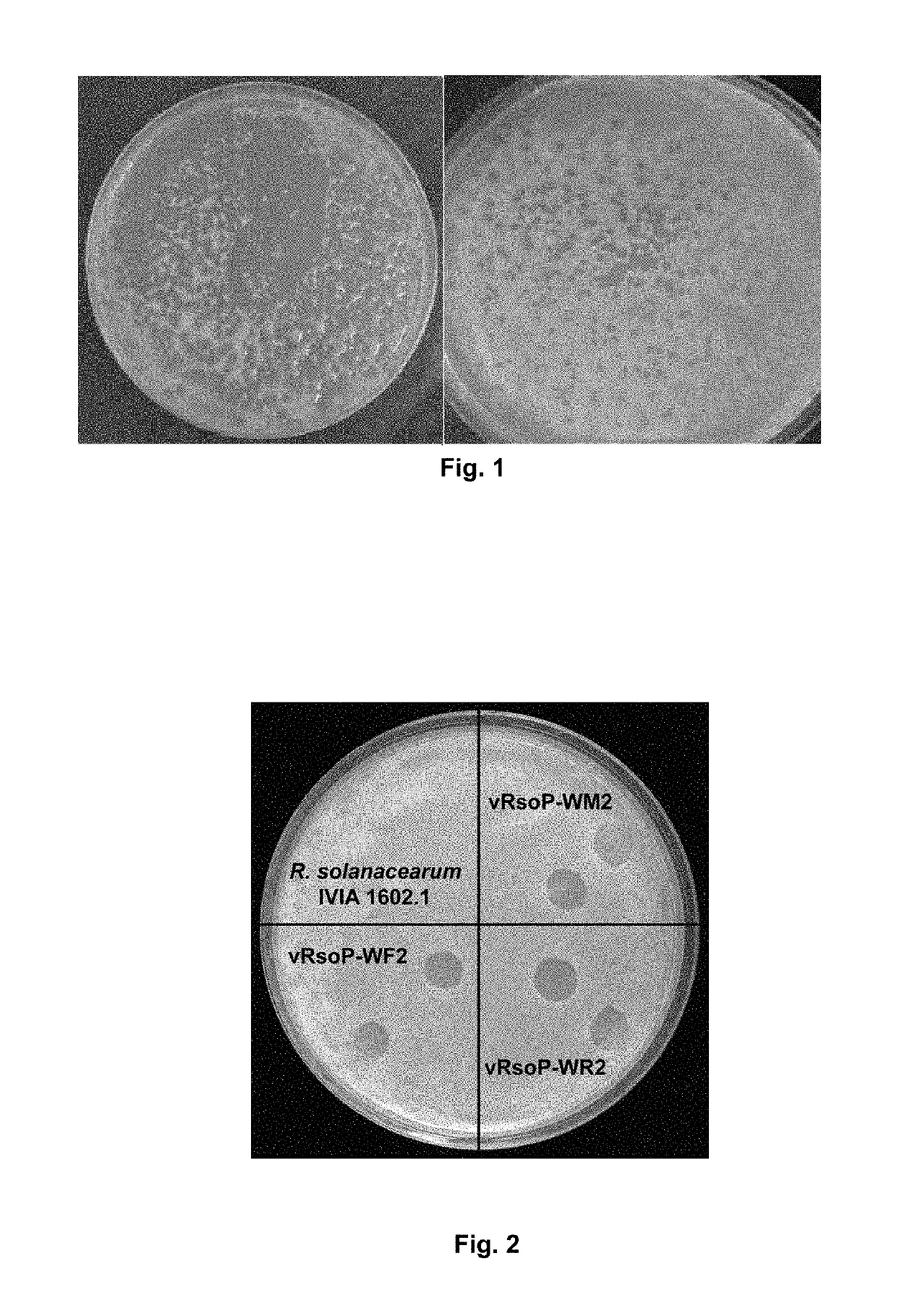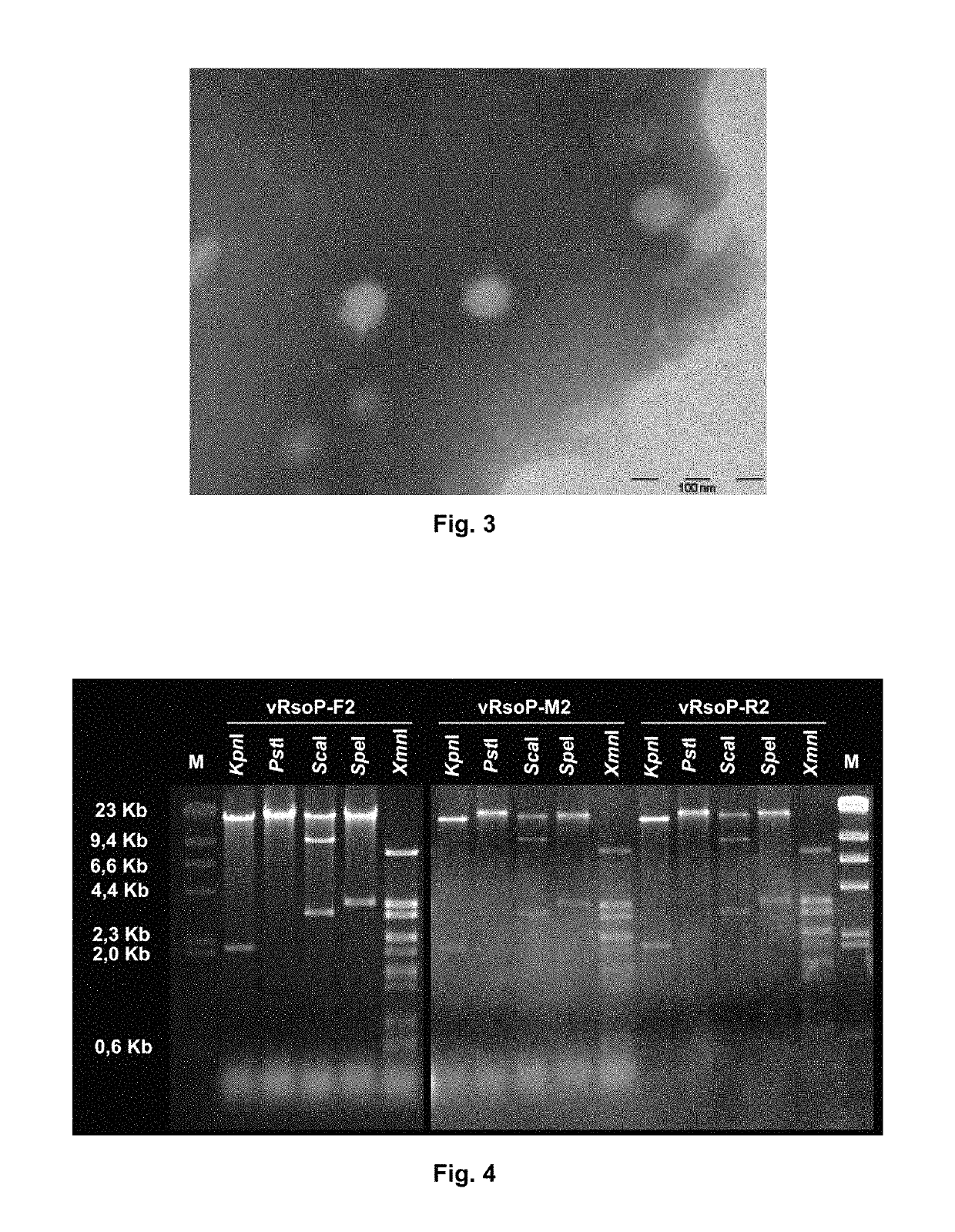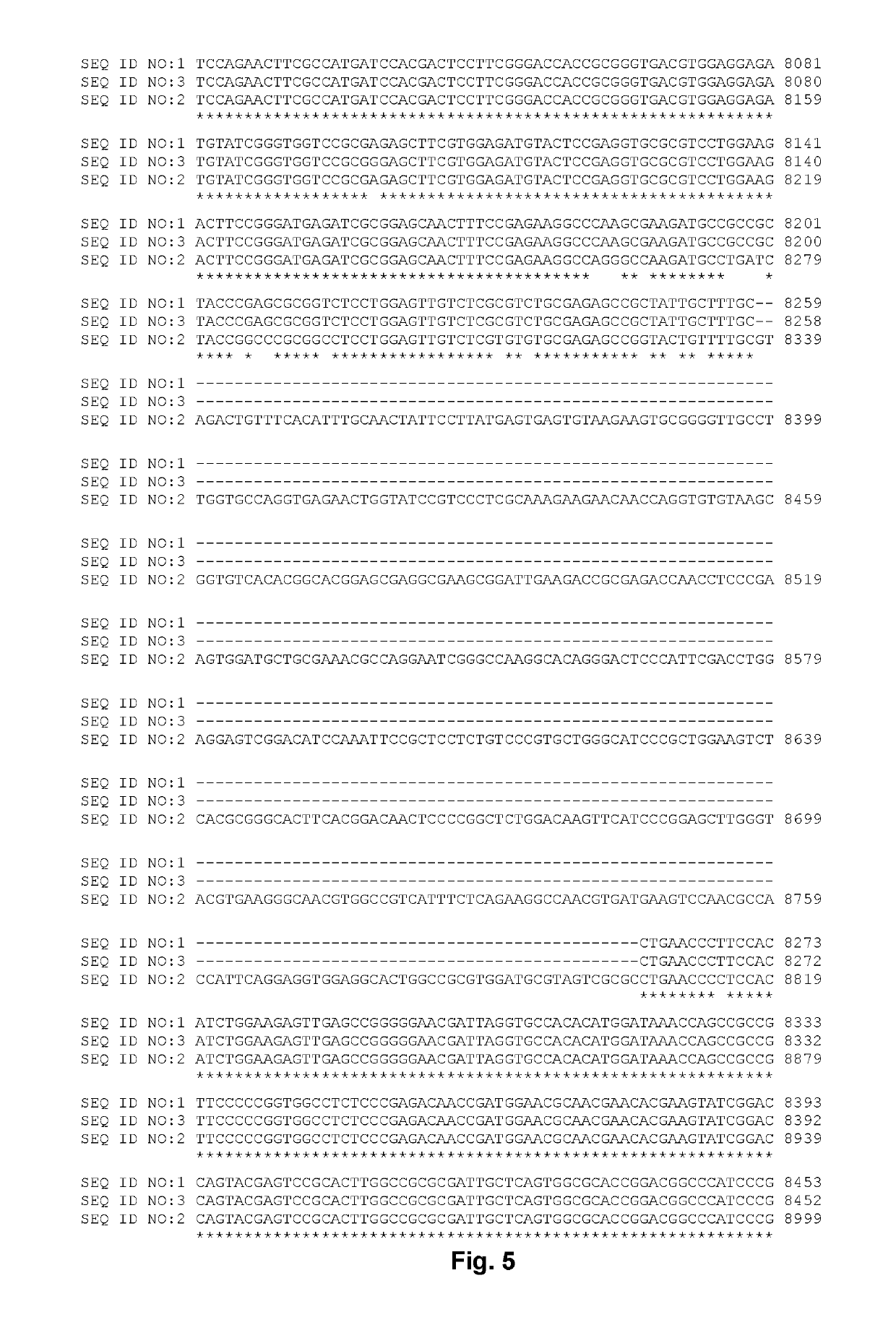Method for the prevention and/or the biological control of bacterial wilt caused by Ralstonia solanacearum, via the use of bacteriophages suitable for this purpose and compositions thereof
a technology of ralstonia solanacearum and bacteriophage, which is applied in the direction of viruses/bacteriophages, biochemical apparatus and processes, biocide, etc., can solve the problems of host plants not being able to grow, watering cannot be used, and loss exceeding 950 million dollars, so as to reduce wilt and high survival rate in water
- Summary
- Abstract
- Description
- Claims
- Application Information
AI Technical Summary
Benefits of technology
Problems solved by technology
Method used
Image
Examples
example 1
Origin and Isolation of the Bacteriophages
[0110]Lytic bacteriophages against R. solanacearum were isolated from several rivers of Castilla-Leon, Extremadura and Andalusia, in the vicinity of fields affected by bacterial wilt. A selection of these bacteriophages was purified and their lytic activity was tested in the laboratory against R. solanacearum, as shown in FIG. 1.
[0111]Among them, three bacteriophages (vRsoP-WF2, vRsoP-WM2 and vRsoP-WR2), from different origins, were chosen for further characterization.
[0112]VRsoP-WF2: isolated from the Tormes River in the vicinity of Salamanca.
[0113]VRsoP-WM2: isolated from the Cayo River in the province of Badajoz.
[0114]VRsoP-WR2: isolated from the Yator River in the area of the Alpujarras, in the province of Granada.
[0115]The three bacteriophages were purified via successive plaque passages in general LPGA medium (yeast extract [5 g]-peptone [5 g]-glucose [10 g]-agar [20 g], dissolved in distilled water [1 litre]; the glucose is sterilized...
example 2
Structural Characterization: Morphological and Molecular Characterization
2.1. Morphological Characterization.
[0130]A study of the morphology of the selected bacteriophages was carried out via transmission electron microscopy of the viral particles after negative staining with phosphotungstic acid. It is observed that they present the characteristic morphology of the Podoviridae family: polygonal, non-enveloped heads 40 to 60 nm in diameter and short tails (FIG. 3). The bacteriophages of this family are also characterized by a genome of double-stranded DNA, a fact which was confirmed in the tests described below.
2.2. Molecular Characterization.
2.2.1. Extraction of the DNA of the Three Bacteriophages.
[0131]Concentrated capsid suspensions were obtained from the three types of bacteriophages from the corresponding bacterial lysates (filtered and treated with DNAse and RNAse to degrade the bacterial nucleic acids), by polyethylene glycol capsid precipitation protocol. After treatment of ...
example 3
Survival of the Three Bacteriophages in Natural River Water
[0146]The survival of the three selected bacteriophages was tested in two different types of river water: Tormes, from Salamanca, and Turia, from Valencia, both in Spain. These two types of water show substantial differences in the main physico-chemical parameters analysed of the composition: specifically with the water of the Turia River values were comparatively 100 times higher for Mn, 10 times higher for Fe, between 5 and 10 times higher for chlorides and triple for nitrates; with water from the Tormes River, values were approximately 4 times higher in phosphate; the average values of pH were around 8.13 in the water from the Turia River and 7.36 in the water from the Tormes river. Temperature ranges of water ranged from 3.5° C. to 20.9° C. for the Tormes River and from 11.5° C. to 22.0° C. for the water from the Turia River, i.e. temperature ranges for both types of environmental water are within the temperature values ...
PUM
| Property | Measurement | Unit |
|---|---|---|
| temperature | aaaaa | aaaaa |
| temperature | aaaaa | aaaaa |
| temperature | aaaaa | aaaaa |
Abstract
Description
Claims
Application Information
 Login to view more
Login to view more - R&D Engineer
- R&D Manager
- IP Professional
- Industry Leading Data Capabilities
- Powerful AI technology
- Patent DNA Extraction
Browse by: Latest US Patents, China's latest patents, Technical Efficacy Thesaurus, Application Domain, Technology Topic.
© 2024 PatSnap. All rights reserved.Legal|Privacy policy|Modern Slavery Act Transparency Statement|Sitemap



